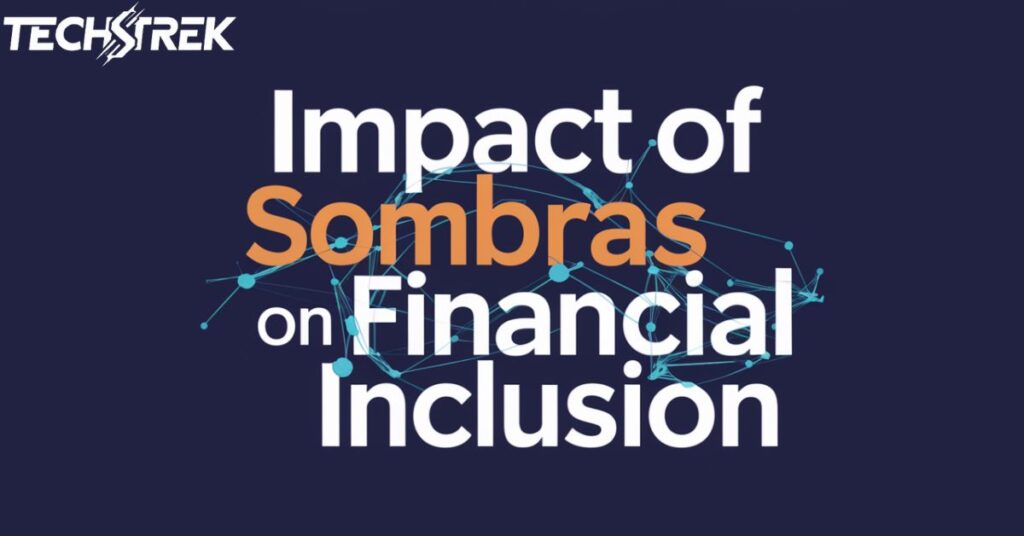Asia’s financial landscape is changing rapidly. Innovative fintech solutions are leading this transformation. At the forefront are Sombras, digital financial entities reshaping money management.
Sombras operate in the digital realm. They use cutting-edge tech to provide accessible financial services. Their impact reaches from big cities to remote areas.
This article explores Sombras’ impact on Asian economies. We’ll look at the tech driving their growth and the challenges they face. Let’s uncover the future of fintech in Asia.
The Rise of Sombras in Asia
Sombras are a powerful force in Asian fintech. They operate beyond traditional banking systems. Their innovative solutions cater to unique Asian market needs.
Mobile tech and internet access fuel their growth. Sombras serve millions previously excluded from banking. Their rise reflects changing consumer preferences and digital economy growth.
Key Drivers of Sombras Growth

High smartphone penetration and supportive regulations fuel Sombras’ growth in Asia. Technological advancements in AI, blockchain, and big data analytics further enable their success.
High Smartphone Penetration
Asia leads in smartphone usage. This provides fertile ground for it . They mainly operate through smartphone apps.
Consumers enjoy 24/7 financial service access. This convenience appeals to all ages, especially tech-savvy youth.
Regulatory Support
Many Asian governments support fintech. They see its potential for financial inclusion and economic growth. Supportive regulations encourage fintech innovation.
Regulatory sandboxes allow experimentation. Fintech-friendly policies build consumer trust in Sombras.
Technological Advancements
Rapid tech progress enables it. AI, blockchain, and big data drive their services. These innovations cut costs and improve efficiency.
Advanced tech enhances risk assessment and fraud detection. It also enables personalized financial solutions. This tech-driven approach gives Sombras an edge over traditional banks.
Sombras vs Traditional Banking

Sombras disrupt traditional Asian banking. They challenge established norms and practices. Let’s explore key differences between Sombras and traditional banks.
Accessibility and Convenience
It eliminate the need for physical branches. Users access services via smartphones 24/7. This breaks down geographical and time barriers.
Rural areas benefit greatly. Sombras reach populations excluded from formal banking. They democratize financial service access.
Cost-Effectiveness
Digital operations lower Sombras’ costs. They offer competitive rates to consumers. This attracts cost-conscious customers.
It can profitably serve small transactions. This opens new microfinance markets. Traditional banks often overlook these opportunities.
Read this Blog: RealizePad.Store: Revolutionizing Your Digital Note-Taking Experience
Innovation and Agility
It adapts quickly to market needs. They launch new products faster than traditional banks. This agility gives them a competitive edge.
They stay ahead of consumer trends and tech advances. Traditional banks often struggle with outdated systems and slow processes.
Table: Comparison of Sombras and Traditional Banks
| Aspect | Sombras | Traditional Banks |
| Accessibility | 24/7 via smartphone | Limited by branch hours |
| Cost | Lower Fees | Higher Fees |
| Innovation | Rapid | Slow |
| Physical Presence | Minimal | Extensive branch network |
| Target Market | Often underserved | Established customers |
Technologies Powering Sombras

Cutting-edge tech drives it’s success. It enables efficient, secure, and personalized services at scale.
Artificial Intelligence and Machine Learning
AI and ML power many Sombra operations. They drive chatbots and risk assessment models. These tools process vast data quickly and accurately.
AI analyzes user behavior for personalized advice. It detects unusual patterns to prevent fraud. This level of service was previously impossible at scale.
Blockchain and Cryptocurrencies
Many explore blockchain and cryptocurrencies. Blockchain offers fast, low-cost cross-border transactions. It’s decentralized and secure.
Someof issue their own digital currencies. This challenges traditional payment systems. It opens new possibilities for financial inclusion.
Big Data Analytics
Digital transactions generate vast data. Sombras use this for insights into consumer behavior. Big data tools inform decision-making and product development.
Data analysis reveals unmet market needs. It helps create targeted financial products. This data-driven approach gives Sombras an advantage over traditional banks.
Impact of Sombras on Financial Inclusion

It is significantly boost financial inclusion in Asia. They use tech and innovative models to serve the underserved.
Reaching the Unbanked
Many Asians lack basic financial services. It bridge this gap. They offer easy-to-use digital wallets and payment systems.
Millions now access formal financial systems. They can save, transact, and access credit. This impact is profound in rural areas with limited banking.
Empowering Small Businesses
It support small businesses and entrepreneurs. They offer easy loans and payment solutions. This fills gaps in SME financing.
Small businesses manage cash flow better. They access working capital and expand operations. This drives job creation and economic growth.
Promoting Financial Literacy
It educate users about finance. They offer in-app tutorials and blog posts. Some use gamified learning experiences.
This education ensures responsible service use. It helps users make informed decisions. It builds trust and long-term engagement.
Challenges Facing Sombras

Despite growth and positive impact, It face challenges. These could affect their future development and adoption.
Regulatory Hurdles
Regulators struggle to oversee it effectively. They must balance innovation with consumer protection. Financial stability is also a concern.
Regulatory uncertainty hinders growth in some countries. Strict rules force business model changes in others. Navigating this landscape is a key challenge.
Cybersecurity Concerns
Digital operations make it vulnerable to cyber threats. They handle sensitive data and transactions. Robust security is crucial for user trust.
Cybercriminals constantly evolve their tactics.It must continually update security measures. A major breach could severely damage reputation and user base.
Competition and Market Saturation
The Asian fintech sector is maturing. Competition among its intensifies. Traditional financial institutions also compete.
Market saturation concerns arise. Some business models may not be sustainable long-term. It must innovate to survive in this competitive landscape.
Future Trends in Asian Fintech

Several trends will shape its evolution. They’ll impact the broader Asian fintech landscape.
Increased Collaboration with Traditional Banks
Sombras and traditional banks may collaborate more. Banks recognize Sombras’ agility and innovation. Its benefit from banks’ infrastructure and customer base.
Collaborations may include partnerships or acquisitions. This could create a more integrated financial ecosystem. It combines strengths of traditional and digital finance.
Expansion of Services
It will likely expand their service range. They may move beyond basic banking and payments. Insurance and wealth management offer opportunities.
New revenue streams drive expansion. Comprehensive services retain customers. AI and data analytics enable more sophisticated offerings.
Focus on Sustainability
Environmental and social concerns grow in importance. It may emphasize sustainability more. They could offer green investment products.
Some may lead in sustainable finance. They could track environmental impacts of financial decisions. Sustainability focus may differentiate them in the market.
Read this Blog: Tech Gaming Defstartup: Revolutionizing the Gaming Industry
Key Sombra Players in Asia
Several of them lead Asian fintech innovation. They set industry benchmarks.
Ant Group (China)
Ant Group is a major Asian Sombra. It offers various financial services. These include wealth management and lending.
Its vast user base and tech capabilities dominate Chinese fintech. Ant Group inspires other Asian Sombras. It attracts significant regulatory attention.
Paytm (India)
Paytm drives digital payment adoption in India. It evolved from a recharge platform to a comprehensive financial service provider.
It reaches urban and rural populations. Paytm supports India’s cashless economy push. It exemplifies its role in financial inclusion.
Grab Financial Group (Southeast Asia)
Grab expanded from ride-hailing to fintech. It leverages its large user base. Grab Financial Group offers payments, lending, and insurance.
Its success shows how non-traditional players can disrupt finance. Grab’s super-app model influences the region.
- These players shape their markets and global digital finance trends.
- Their stories offer lessons for it and traditional institutions aiming to innovate.
The Bottom Line
Sombras represent a shift in Asian financial services. They democratize finance access. This drives inclusion and economic growth.
It will shape Asia’s financial future. Their success offers global fintech lessons. However, challenges remain.
Regulatory complexities and cybersecurity concerns persist. Sombras must find sustainable models in a competitive market. Their journey will significantly impact Asian and global finance.
Frequently Asked Questions
What exactly are Sombras in the context of Asian fintech?
They are digital financial entities offering services via smartphones and internet.
How do Sombras differ from traditional banks?
Sombras offer greater accessibility, lower costs, and faster innovation than traditional banks.
Are Sombras safe to use?
Sombras use advanced security, but users should exercise caution as with any financial service.
Can Sombras replace traditional banks entirely?
Currently, It complement rather than fully replace traditional banking services.
What is the future outlook for Sombras in Asia?
It will likely continue growing, with increased regulation and service expansion.








